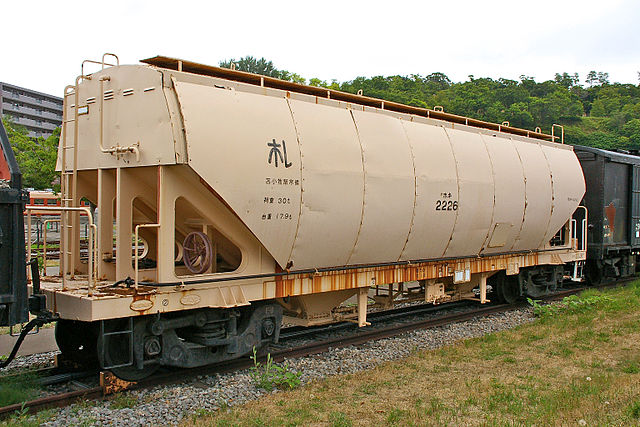A grain elevator is a facility designed to stockpile or store grain. In the grain trade, the term "grain elevator" also describes a tower containing a bucket elevator or a pneumatic conveyor, which scoops up grain from a lower level and deposits it in a silo or other storage facility.
Cargill grain elevator in La Crosse for barges (Click for aerial video)
Railroad grain elevator in Hope, Minnesota
Saskatchewan Wheat Pool No. 7, Thunder Bay, Ontario
The Port Perry mill and grain elevator, circa 1930: Built in 1873, it is the oldest grain elevator in Canada and remains a major landmark to this day. The line of the PW&PP Railway can be seen in the foreground.
The grain trade refers to the local and international trade in cereals such as wheat, barley, maize, and rice, and other food grains. Grain is an important trade item because it is easily stored and transported with limited spoilage, unlike other agricultural products. Healthy grain supply and trade is important to many societies, providing a caloric base for most food systems as well as important role in animal feed for animal agriculture.
Bidders at the Minneapolis Grain Exchange in 1939
Concrete-Central Elevator of Buffalo, New York with a 4,500,000 bushel capacity built by Monarch Engineering Company before January 1919
While once grain was sold by the sack, it is now moved in bulk in huge ships like this.
Hopper-bottomed railcars, such are this one from Japan, have made moving grain much faster and less labour-intensive.








